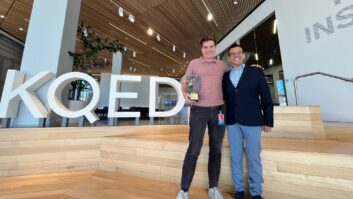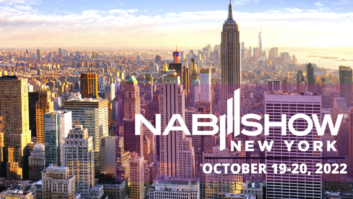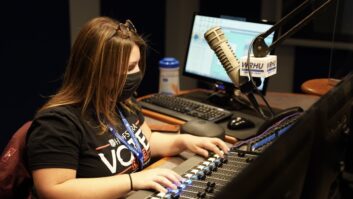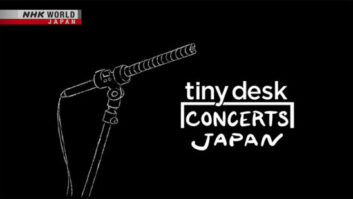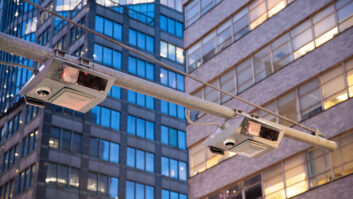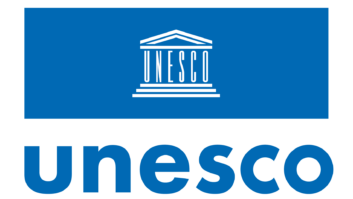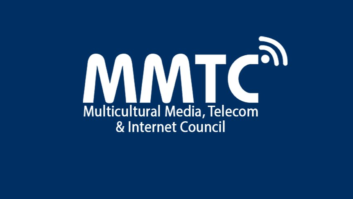Sessions Also Delve Into the Merging Worlds of IT and Broadcast Technology
Monday morning, April 18: “Test, Measurement and Quality Control for a Digital Radio Plant”
Monday afternoon, April 18: “IT in the Radio Broadcast Facility”
Monday morning’s session “Test, Measurement and Quality Control for a Digital Radio Plant,” part of the NAB Broadcast Engineering Conference, will be chaired by Tom Ray, corporate director of engineering for Buckley Broadcasting/WOR Radio in New York.
“The coming of IBOC has made our standard ways of test, measurement and quality control in radio passé in many areas,” he said. “Being at one of the first high-power AM IBOC stations in the country, I have experienced many of the topics being presented first-hand, and the ways in which to do our jobs in the digital radio era may be an eye-opener to many.”
An afternoon session turns to IT concerns.
Digital detail
Examining AM and FM IBOC measurement issues in the morning will be David Maxson, managing partner of Massachusetts-based Broadcast Signal Lab, who will speak on “Performance Measurements of Hybrid IBOC Signals.”
“The unveiling of IBOC has brought subtleties of performance measurements to light,” he said. “We need to peel back the onion and look more deeply into measurement issues for hybrid AM and FM IBOC implementation.”
Earlier papers have examined FM IBOC emissions specifications. This paper is expected to examine all facets of the IBOC signal.
Why power and VSWR measurements are important will be explored by Tim Holt, director of application and system engineering at Bird Electronic Corp., in “Practical Considerations in the Measurement of Power and VSWR in Broadcast Transmission Systems.”
“The accurate and reliable measurement of transmitter output power has always been an important consideration in the operation of broadcast transmission systems,” he said.
“In addition, an ongoing knowledge of the VSWR or return loss of the antenna and feeder system is also of critical importance, as these parameters will have a direct impact on the radiated energy of the system. These measurements are important for older-generation analog transmission systems, and are even more important today the advent of digital broadcast methods based on the latest technology.
“Finally, we will present some data which compares the accuracy of various methods for the measurement of power.”
Ben Dawson and Ron Rackley of the dTR/H&D Joint Venture supervised the measurement of bandwidth characteristics of over 50 CPB-qualified AM stations. Dawson’s presentation is “Examples of AM Antenna Bandwidth From Over 50 Typical (?) Cases.”
“We found cases where remedial measures will be inexpensive and simple as well as cases that will be more costly and complicated,” Dawson said.
“We also found cases where a practical implementation will not be possible without complete antenna system redesign. This presentation will detail actual stations and provide an insight to those who are interested in IBOC implementation as to what they may expect when bandwidth is considered.” Also examined are the IBOC capabilities of the transmitters involved.
Radio IT
Of interest to radio attendees on Tuesday afternoon is “IT in the Radio Broadcast Facility, “ chaired by Clear Channel Radio Senior Vice President/Engineering Steve Davis.
“As radio broadcasting technology continues to evolve, the line between ‘broadcast technology’ and ‘information technology’ continues to blur,” he said.
“Today’s broadcast engineer must understand and manage a variety of technologies that may in past years have been considered in the IT director’s domain. In many modern broadcast facilities, the IT infrastructure is a mission-critical component of the broadcast delivery system.”
The session will explore IT-related challenges, issues and opportunities that broadcast engineers may encounter in a modern radio facility.
Traditional STLs are one-way paths from the studio to the transmitter site. HD Radio raises new issues for the connection to the IBOC transmitter. Bill Gould, broadcast sales engineer with Moseley Associates Inc., said, “New broadcast applications such as remote mirrored servers, RDS and IP-addressable equipment place bidirectional requirements on the once-simple STL.”
The presentation “New STL/TSL Solutions for LAN/WAN Extension to Transmitter Sites” will explore the narrowing distinction between information and broadcast technologies.
“Studio Structures for Surround Broadcasting,” by Steve Church, founder and CEO of Telos Systems, will look at the necessity of upgrading studio facilities to accommodate 5.1 surround sound.
“There is growing interest among broadcasters to deliver a surround listening experience to their audiences,” he said. “Surround is clearly the hot topic at audio, consumer electronics and computer shops. Visit any of these and you will see plenty of surround audio set-ups.
“The one price to be paid is the need to upgrade studio facilities to surround. Specifically, we need to store, network and mix in the 2 + 5.1 format. So let’s walk through how one would build a modern 2 + 5.1 plant, with a careful eye to cost.”
William Eldridge, vice president of strategic operations for U-Turn Media in the Czech Republic, will address “IT Service Management Applied to Broadcast Facilities,” discussing sharing of storage, network and computer-based applications.
“ISP costs are cheap enough and laptops with good software plentiful, so even smaller stations can provide some reasonable level of off-site backup of both IT systems and broadcast/call-in facilities,” Eldridge states.
AES/EBU-encoded audio, multichannel digital audio, bit rates and frequencies, synchronous and asynchronous data, co-existence with analog as it pertains to nominal level and FSC (Full Scale Digital) and encoding techniques to deliver these multi-channel digital signals – these are some of the details that Al Salci, vice president and co-founder of Sierra Automated Systems & Engineering Corp., will address in “Data Transport for Audio.”
“We will discuss how we apply this technology in our products and illustrate practical applications for radio broadcast facilities,” Salci said.
Demand for original media programming combined with a hunger for vintage content has created a need for archiving materials.
“Information Lifecycle Management for Broadcasters,” by Tom Hallewell, manager of network and information services at Radio Free Asia, will explore questions of what should be saved, how should it be saved and for how long. Considerations include corporate and user data, program archives and production outtakes. Decisions on volatility, accessibility and sensitivity will be examined.
“This paper hopes to help get your organization thinking about information lifecycles so that you do not fill up all your storage or lose valuable content and data,” he said.
“Broadcast Infrastructure Engineering of the Future” is to be presented by Ray Miklius, vice president of studio systems at Broadcast Electronics.
“This is an exciting time to be a broadcast engineer,” he said. “As domestic radio broadcasters grapple with Ibiquity’s HD Radio technology as well as with RBDS datacasting initiatives, engineers must begin to plan for implementation, not only with the RF plant, but also with the implications for studio facilities and multimedia transport equipment.”
He said he will attempt to preview applications that will arise out of HD Radio and datacasting and give a guideline on how to prepare for eventual implementation.
“Particular emphasis will be on the potential datacasting initiatives, both for today’s analog FM RBDS, and for tomorrow’s secondary audio channel and data channel provisioning associated with HD Radio.”
An overview of Wheatstone audio networking products and its associated components will be given by Phil Owens of Wheatstone in a presentation on “Data Transport for Audio.”
Examples of various interconnection topologies will be presented along with discussions on redundancy and risks associated with router-based systems. Comparisons with competing topologies will be examined.
“Empowering Your Audience: Creating Rich Online Archives for Talk Radio” features Frederick Gleason, director of broadcast software development at Salem Radio Labs. He is expected to examine solutions for Internet streaming of talk radio programming using available open-source software.
“Many organizations still have not found an optimum method for presenting their audio content in the online environment,” he states.
“Distributed Intelligence Applied to Routing of Audio and Control in a Radio Broadcast Environment” by Ted Staros, senior engineering manager of Harris’ Broadcast Communications Division, will describe a distributed routing architecture for radio broadcast as opposed to the traditional centralized X-Y approach.
“This new approach extends the routing mechanism beyond a centralized routing device, and establishes a fully distributed, extensible community of routing resources,” he said.
“Audio consoles, with their high quantity of sources and destinations, become an integral part of this distributed routing fabric. Issues of extensibility, redundancy, latency and distributed control are examined.”





